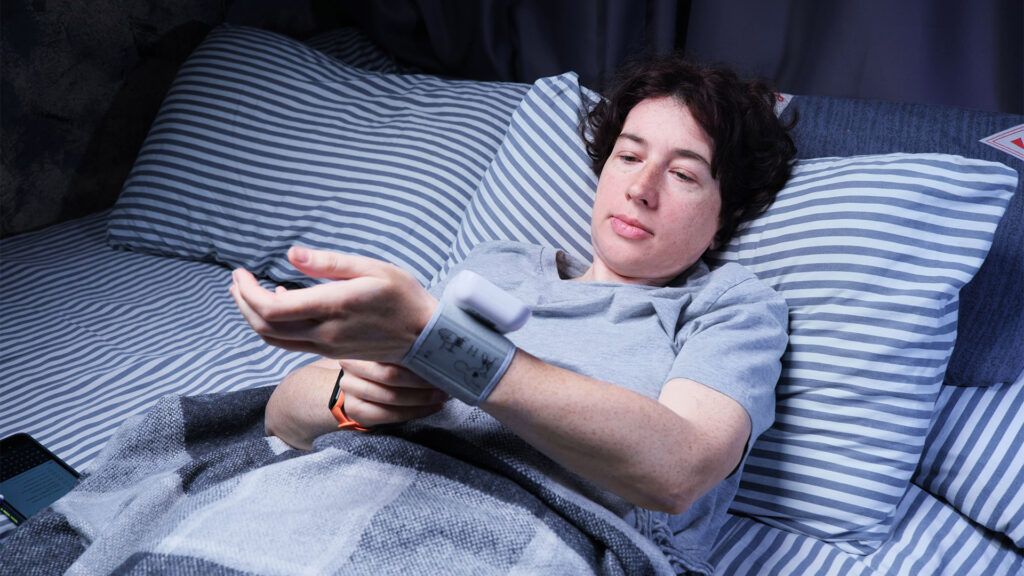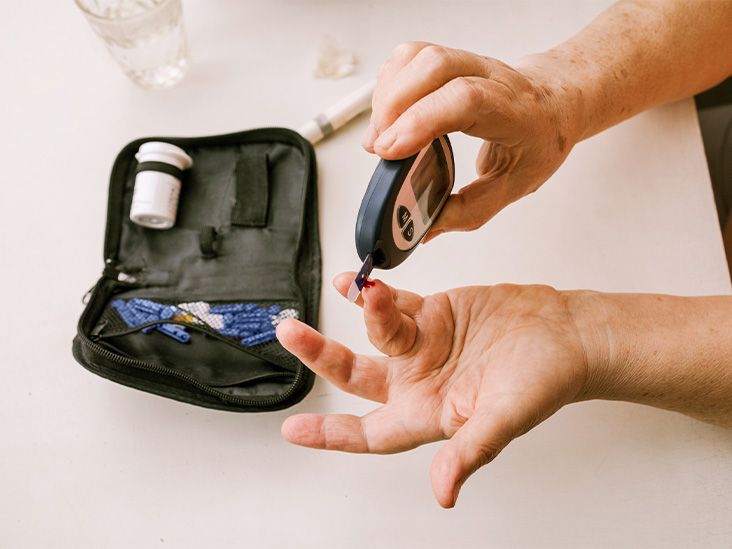Experts have not reached a consensus on how lying down affects blood pressure. Studies on the subject have had different outcomes.
Some, but not all, have found that lying down raises blood pressure. For example, an older
However,
As a result, experts do not universally agree on the effect that lying down has on an individual’s blood pressure. Whether it raises or lowers blood pressure may depend on factors such as a person’s body position, overall health, age, or sex.
This article discusses what happens to blood pressure when lying down, how that compares with sitting or standing, and the best practices for checking blood pressure.

It is typical for blood pressure to change when a person moves from standing to sitting or lying down. However, studies on how blood pressure usually changes during these transitions have had inconsistent results.
The previously mentioned
Systolic pressure is the force inside the arteries during a heartbeat, while diastolic is the force in the arteries when the heart rests. A person may often see these represented as two numbers, with the systolic pressure on top and the diastolic pressure on the bottom.
However, more recent research has shown different results. As mentioned, in a
It is possible that the reason for these inconsistent results includes differences in the participants of the studies. The authors of the 2018 study also suggest that the method of measuring a person’s blood pressure may affect results, as well as the number of times the researchers check a person’s blood pressure.
Overall, researchers do not know the exact reason for differences between blood pressure when lying down and sitting or standing.
However, significant differences in blood pressure depending on body position may increase as a person gets older or may indicate certain health conditions, such as supine hypertension or diabetes.
Supine hypertension is when a person has significantly and consistently high blood pressure when lying down, and it can result from another condition, such as sleep apnea.
Optum Perks is owned by RVO Health. By clicking on this link, we may receive a commission. Learn more.
Study results have been similarly inconsistent on how a seated position may affect a person’s blood pressure.
While the aforementioned
When it comes to sitting versus standing,
An older
However, if an individual’s blood pressure always drops significantly when standing up from sitting or lying down, they may have orthostatic hypotension.
Orthostatic hypotension, or postural hypotension, is a condition that causes a sudden drop in blood pressure when a person stands up. This can result from certain medications, blood loss, or autonomic dysfunction.
A big enough drop in blood pressure may cause a person to feel dizzy or lightheaded. In some cases, it may cause them to faint or lose consciousness.
According to the
The individual should sit down for 5 minutes before the test begins while wearing the blood pressure cuff, with their arm resting on a table at chest height.
However, in cases where a doctor or other healthcare professional is investigating conditions such as orthostatic hypotension or supine hypertension, testing in different body positions may be necessary.
For at-home blood pressure testing, it is best to use the same position each time a person measures their blood pressure, as this will allow them to compare the results over time.
Self-measured blood pressure monitoring allows an individual to check their own blood pressure at home. A person can do this by acquiring an automated blood pressure monitoring device, which is safe and easy to use.
To check blood pressure at home:
- Do not smoke, consume caffeine, or do any exercise for
30 minutesTrusted Source before checking blood pressure. - Before beginning, sit still for 5 minutes.
- Place the cuff 1 inch (2.5 centimeters) above the crease of the elbow.
- Place the arm on a flat surface, such as a table, at chest height.
- Sit upright, with feet flat on the floor and legs uncrossed.
- Start the machine.
- Do not speak while checking blood pressure.
To get the most accurate readings:
- Check blood pressure at the same times each day.
- Begin by testing with both arms, then always use the arm with the higher readings.
- Check blood pressure two or three times.
- Do not round results up or down.
If a person has concerns their blood pressure is changing too much when they lie down or stand up, they should speak with a doctor.
Symptoms such as severe headaches, chest pain, and dizziness can be signs of high blood pressure, while symptoms such as dizziness and fainting may indicate low blood pressure.
Without treatment, hypertension can cause serious complications. Medical treatment from a doctor and lifestyle changes can help to lower blood pressure and may prevent complications.
There is no consensus among experts concerning how lying down can affect a person’s blood pressure. While
It is important for a person’s body position to remain the same each time they check their blood pressure in order to make sure results are not affected by changes in position. If a person has any concerns about their blood pressure, they should speak with a doctor.


